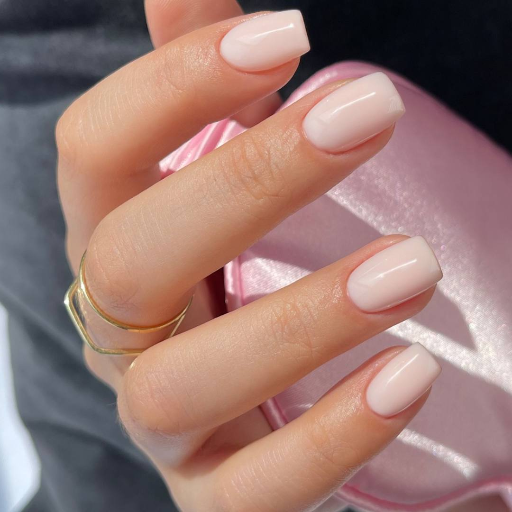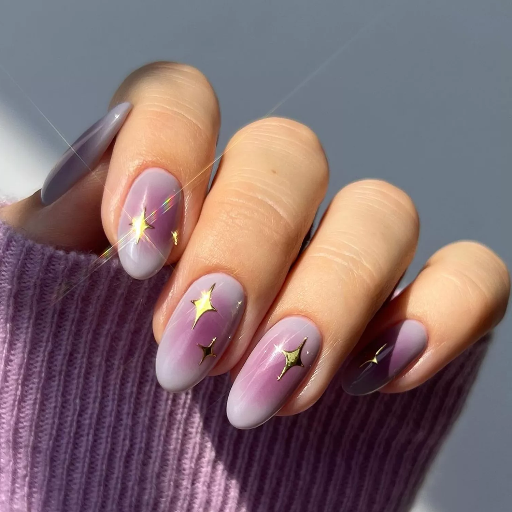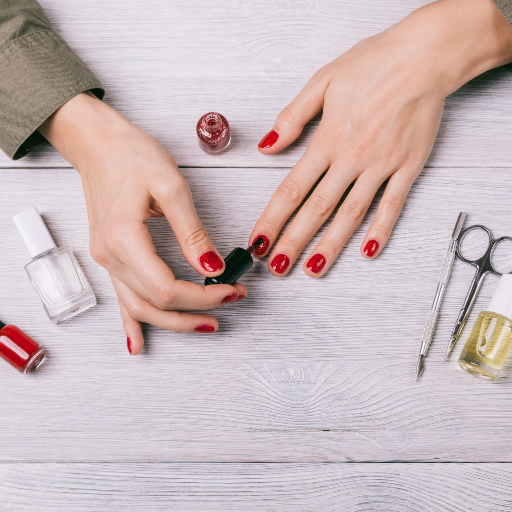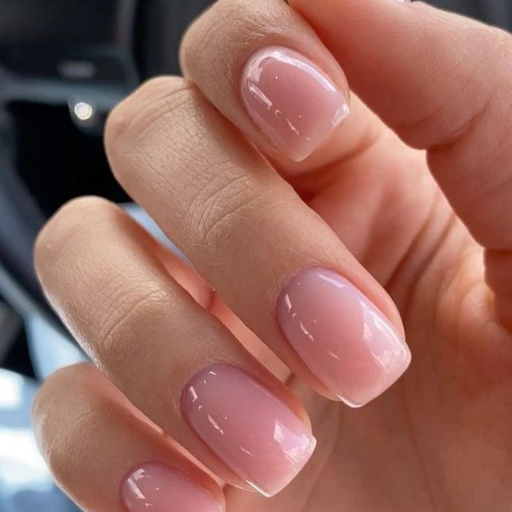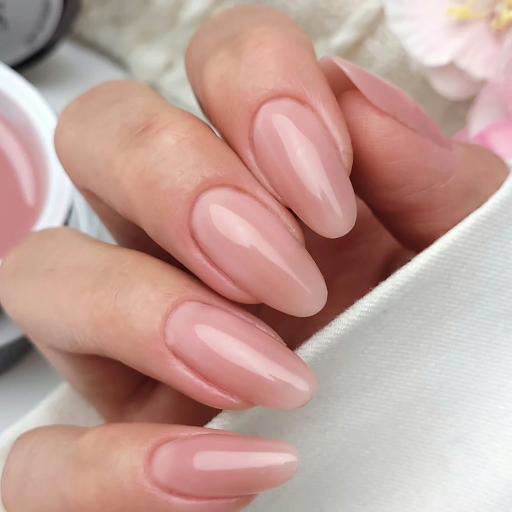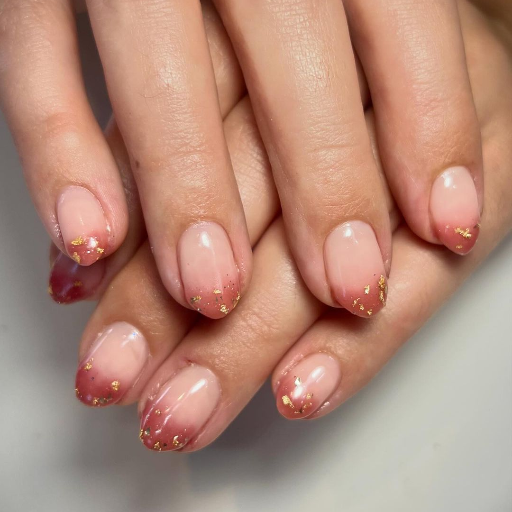Tanning is one of the problems that we will try to solve but before that let us focus on what makes our skin darker in the first place which is tanning! If you are someone who is looking to maintain an even skin tone, then this post is for you! We will also answer some important concerns relating to sun protection. We plan to do this by answering the question: Does sunscreen help in preventing tanning? We will investigate the specifics of sun protection and go on to discuss how much of it is readily available in sunscreens, the mode of action, the components, and the factors necessary for a sunscreen to be effective. To optimize the protection, we will also provide some other basic tips. By the end of this article, you will comprehend what sunscreens do and do not do and also comprehend how to effectively protect oneself from the sun.
How Does Sunscreen Work?

Sunscreen has become an important tool as it prevents the skin from the adverse effects that can be exposure to the sun’s ultraviolet-UV rays. This is done through:
Reflection: Sunscreen contains substances that can act as physical blocks; among these ingredients are also titanium dioxide or zinc oxide. These substances create a barrier on the skin that reduces the amount of UV rays that would otherwise penetrate the skin.
Absorption: Sunscreen also contains other components such as avobenzone or oxybenzone which may absorb ultraviolet radiation and convert it into less harmful energy formats, such as heat. This prevents the reach of UV radiation to the subcutaneous layer of the skin, preventing penetration.
As a result of these features sunscreen works as a layer or shield protecting the skin’s structural integrity against sunburns, skin cancer, and skin-related wrinkles. To ensure efficient prevention, it is recommended to put enough amount of sunscreen as well as retract it after swimming or perspiring. Always keep in mind that applying sunscreen is extremely essential in taking care of the skin against the sun along with other tools and practices.
Understanding the SPF: How It Protects Your Skin
Sun Protection Factor (SPF) is one number that everyone should look out for when choosing sunscreen. It indicates how protected a person is from UVB rays in the sun, which are responsible for burning someone’s skin. This article aims to simplify some of the commonly asked questions related to SPF and its functioning in protecting the skin:
What does SPF do? How does it give protection to the skin?
Simply put, SPF is the term used to indicate the degree of UVB protection a sunscreen offers. For instance, 30-rated SPF sunscreen can block approximately 97% of the UVB rays.
The level 30 SPF will offer protection, but would not be as protective as SPF 50. SPF 50 offers more protection than SPF 30 but only slightly.
SPF as a measure does not provide the level of protection against UVA rays which can cause skin lines and skin cancer. For instance, always look for “broad spectrum” sunscreen as these protect from UVA rays as well as UVB.
Is it possible to not tan with the use of sunscreen?
The short answer would be, no. For instance, sunburning is something that can be avoided due to the use of sunscreen, however tanning would still be possible. Tanning is a form of response that the skin has towards intense sun exposure.
Since tanning is impossible, sunscreen aids in lowering the level of UV exposure to your skin, thereby, lessening the opportunity of burning or receiving damage from UV rays.
Is it possible to still tan in the presence of sunscreen?
It is clear that not just one factor enables the person to tan, but also others including overexposure such as his or her skin type and UV intensity.
However, even if it is assumed that sunscreen is used regularly, it is unlikely that 100% of UV rays are blocked. Tanning is still possible as some of this power can penetrate the skin.
Studying these elements of SPF, and particularly students of the limitations of any sunscreen product should never help you understand what is possible. Rather all of these should constantly remind you that over-reliance on sunscreen will invariably lead to skin damage unless supplemented with other measures. Use high-SPF sunscreen and re-apply often to protect your skin.
The Role of Broad-Spectrum Sunscreen in Blocking UV Rays
Being consistent in caring for my skin, I appreciate the value of broad-spectrum sunscreen in light of the adverse impact UV rays have on my skin. It must be remembered that sunscreen is not merely a cosmetic application, but rather it is a physical impediment to damaging UV penetration, and thus lowers the incidence of sunburns and damage from UV exposure. Some people pose the query if it is possible to be tanned while using sunscreen. Certain parameters should be taken into account when trying to answer the query; these factors include skin type, UV levels, and duration of exposure. While regular sunscreen application is encouraged, it does not guarantee a full 100% blockage of UV rays, thus it is inevitable that some portion of these rays would still penetrate the skin.
To fully comprehend the effectiveness of the said product, it is important to browse through research articles and other relevant studies. The above questions can be best answered by checking the top-ranking websites on Google and their corresponding content. A point worth considering is that sunscreen cannot and should not be the sole source of sun protection. Other strategies should be adopted in addition to this practice such as wearing appropriate clothes, sitting in the shade, and not staying outside during peak times. Using a sunscreen with a high SPF Broad Spectrum and frequently reapplying will ensure that your skin remains well protected against the elements.
At the same time, keep in mind that you should build your knowledge and take a multifaceted preventive approach regarding the sun to reduce the risk of any UV damage to your skin.
Can Sunscreen Prevent You from Tanning?
I am confident that sunscreen reduces the risk of tanning due to harmful UV rays as this is my area of specialization. Many authoritative bodies and studies have similarly reiterated the need for sunscreen use.
WebMD states that sunscreen works to protect the skin from the burning rays of the sun by absorbing or reflecting UV radiation. Using a high SPF Broad Spectrum sunscreen and reapplying it frequently can help in tanning a lot less.
The American Academy of Dermatology (AAD) also backs this as a stated fact that sunscreen is indeed necessary. Though they do agree that it will not eliminate the chances of tanning, it is effective in limiting the damage caused by UV rays as well as the degree of tanning.
Healthline adds that sunscreen should never be viewed as the sole resource when engaging in sun protection. It plays an essential role in fighting UV radiation however, it is always good practice to wear protective clothing, stay in the shade, and avoid the worst times in terms of sun exposure.
To sum up, sunscreen helps avoid tanning and also aids in safeguarding one’s skin from UV rays damage. However, the application of sunscreen alone is not enough, and other measures for sun protection should be applied for the maximum amount of protection from the sun.
Does Sunscreen Prevent You from Tanning Completely?
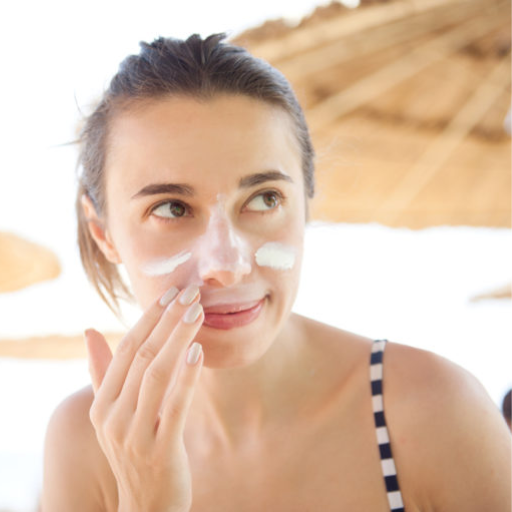
Though sunscreen is one of the pillars of sun protection, it isn’t the ultimate shielding solution in the prevention of tanning. As stated by the AAD, sunscreen is effective in lessening some of the destruction of UV rays and tan but sunscreen alone cannot be relied on to the fullest extent. Healthline puts its emphasis on the fact that sunscreen is just one of the many tools in the toolbox of sun protection that should be used in harmony with clothing, shade, and normal hours as time to avoid the sun. Regular applications of sunscreen reduce the chances of getting burnt and the harmful effects of UV rays, but one should not use it as the main source of sun shields. Tanning is a process harmful to the skin, avoiding it should be done by applying numerous sun protection methods.
Why Tanning May Still Occur
Tanning occurs due to the skin’s natural response to UV radiation, even when using sunscreen. While sunscreen is an essential component of sun protection, it is not a foolproof solution for preventing tanning completely. Here are some key factors to consider:
- Effectiveness of Sunscreen: According to the American Academy of Dermatology (AAD), sunscreen helps reduce the damage caused by UV rays and minimizes tanning to some extent. However, it should not be solely relied upon for complete protection.
- Multiple Layers of Protection: Healthline highlights that sunscreen should be used in conjunction with other sun protection methods, such as wearing protective clothing, seeking shade, and avoiding the sun during peak hours. Combining these strategies provides a comprehensive approach to safeguarding the skin.
- The Nature of Tanning: Tanning is a natural defensive response of the skin to protect against UV radiation. It indicates that the skin has been exposed to UV rays and is producing melanin as a shield. While sunscreen can help minimize the harmful effects of UV exposure, it does not block all UV rays, which can still trigger the tanning process.
It is important to note that excessive tanning can lead to skin damage and increase the risk of skin cancer. Therefore, practicing a combination of sun protection measures, including sunscreen, can help minimize the risk of tanning while providing comprehensive protection against the harmful effects of UV radiation.
The Science Behind Tan with Sunscreen
The fact that I am a skincare connoisseur and I appreciate the need to protect my skin from the sun makes sense. The obsession with having a beautiful tan does not eclipse the fact that UV rays are harmful. To better understand the concept of tanning with sunscreen, it would be beneficial to refer to some of the most credible ideas available on the web.
How does one use tanning creams along with sunscreen?
Sunscreens are very effective in safeguarding the skin from the damaging effects of the sun by filtering out both harmful UVA and UVB radiation. While sunscreens can help to reduce the chances of getting a sunburn or damage to the skin, they can also diminish levels of tanning. Sunscreen contains, among other ingredients, zinc oxide in the formulation that works as a protective film that blocks or absorbs some UV rays.
Is it possible to obtain a tan while applying sunblock?
Yes, one can still develop a tan even after applying sunscreen. A broad-spectrum sunscreen with an adequate SPF rating, which protects against both UVA and UVB rays, can permit passive amounts of UV radiation to penetrate the epidermal layers of the skin. This stimulates melanin production within the skin, and it is the pigment that facilitates the tanning process. Most importantly, melanin saman further helps but not intensively by using sunblock to restrain the level of tan and to an extent prevent skin from damage.
What is the rationale behind using tanning lotions containing sunscreen?
It is necessary to use sunscreen for tanning so that the goal of getting the desired tan without exposing oneself to UV rays that could harm the skin. Sunscreens are effective in protecting against sunburns, wrinkles, and skin cancers that usually arise from prolonged exposure to the sun. Moreover, people can combine the use of sunscreens and other forms of protection such as wearing sun protective gear or seeking shade, as a means of protecting the skin while having fun with the sun.
Bear in mind that safe tanning involves the proper use of sunscreen, along with protection measures from the sun, and limiting the time and strength of the sun on one’s skin. To enjoy the benefits derived from sunlight, skin, and protection must always be given priority to reduce the related risks that come from overexposure to UV rays.
Factors Affecting Sunscreen’s Ability to Prevent Tanning
The use of tanning lotions to acquire a tanned appearance and apply sunscreen is based on the premise that the skin can be successfully tanned whilst being protected from the sun. Sunscreens should be used as they are essential in preventing burning, wrinkles, and skin cancers due to prolonged sun exposure.
Sunburn Protection Factor (SPF): SPF also termed as sun protection factor, describes the specific effectiveness of any sunscreen in providing coverage against the UVB rays which mostly cause sunburns. The higher the SPF rating the lesser the incidence of sunburns but with a catch that no sunscreen can guarantee complete skin protection.
Broad-Spectrum Coverage: Sunscreens labeled as broad-spectrum serve as functional protection for both UVA and UVB rays. Long-wavelength UV rays cause photodamage changes that trigger premature aging, making it an even more desirable aim of avoidance. For that reason, having a broad-spectrum sunscreen is advisable for complete prevention.
Timing and Repetition: The whole requirement for sunscreen to be effective lies in the correct application and timing. It is advisable to apply sunscreen in adequate clumps or portions 15 to 30 minutes before coming in contact with the sun, and every 2 hours to be re-applied while also being applied wherever necessary such as after swimming or when one is sweating.
While sunscreen is an important component of sun safety, it should not be relied upon in isolation and other sun protection measures must be employed. The wearing of protective clothing, avoidance of the sun at peak times, and minimization of sun exposure are crucial measures to protect against the effects of overexposure to UV rays. Considering skin health and the necessary steps that must be taken, there are ways in which one can enjoy sunshine while avoiding as much as possible the destructive effect that sunshine has on the skin.
What is the Right Sunscreen for Optimal Protection?
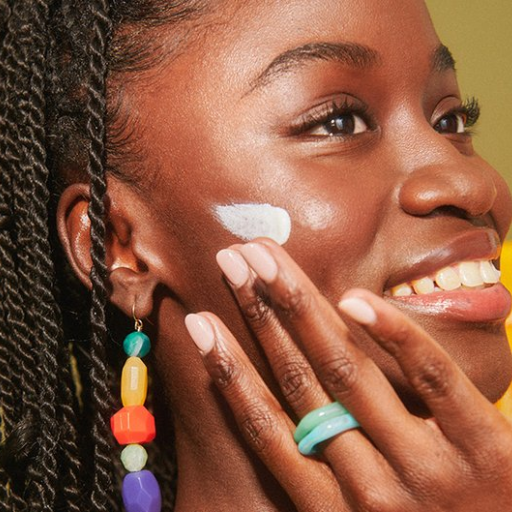
When it comes to choosing the right sunscreen for optimal protection, several factors should be considered. Here are some key points to keep in mind:
SPF (Sun Protection Factor): Look for a sunscreen with a broad-spectrum SPF of 30 or higher. This indicates the level of protection against both UVA and UVB rays.
Water Resistance: If you plan on swimming or sweating, opt for a water-resistant sunscreen to ensure it stays effective even when exposed to water.
Skin Type: Consider your skin type and any specific concerns you may have, such as sensitivity or acne-prone skin. Look for sunscreens that are formulated to address your specific needs.
Ingredients: Pay attention to the ingredients used in the sunscreen. Look for ingredients like zinc oxide or titanium dioxide, which provide effective physical protection against the sun’s rays.
Texture and Application: Choose a sunscreen that suits your preferences in terms of texture, whether it’s a lotion, cream, gel, or spray. Consider how easy it is to apply and whether it leaves a white residue on the skin.
Remember, sunscreen is just one part of a comprehensive sun protection regimen. It should be used in conjunction with other measures such as wearing protective clothing, seeking shade, and minimizing sun exposure during peak hours. By combining these strategies, you can enjoy the sunshine while taking proactive steps to protect your skin from harmful UV rays.
Choosing the Right SPF: Higher SPF vs. Lower SPF
Selecting the optimal level of SPF which is the sun protection factor as used on the label of sunscreen is equally important in ensuring protection from sun. When choosing sunscreens with higher SPF or lower SPF, several points need to be taken into account. Here are some Jose considerations to remember:
Protection Level: SPF measures the effectiveness of the sunscreen against burning rays, and UVB rays. Higher SPF sunscreens block more shiny rays and thus offer more Diaz shields against sunlight. However, a sunscreen of SPF 30 is recommended in most instances.
Individual Factors: However, other factors such as tanning and recombing the for rounds the eye are also unable to be ignored in choosing recommended sunscreens with SPF levels appropriate for the user. People who have burned frequently or ever had a tan with higher sensitivity should get stronger SPF protection from high sunscreens.
Investment: However, the most critical aspect to note is to make sure that the sunscreen is in a liberal quantity and be consistent with reapplying it frequently; that’s the recommendation. Effective sun protection by 95 or any level of sunscreen only passes for a short period. It is increasing exposure which leads to reduced effectiveness options. Thus the advised periods require re-application of the product preferably every 2 hours or during times of high activity within the sun’s rays scope.
Higher SPF sunscreen obv. provides higher protection, but it can potentially lead to discomfort due to its thickness texture, or residue left on the skin as compared to a lower SPF. If this situation is making the application difficult, it is recommended to use a lower SPF sunscreen with a comfortable texture.
In the end, the decision on the level of SPF that is to be used is a matter of personal choice and circumstances. Taking into account personal factors and the time and intensity of the sun exposure, it would be best to consult with a physician especially a skin specialist to find the most suitable SPF for you. Always remember: together with other measures, regular and correct sunscreen application is the only way for the skin to be protected against harmful ultraviolet radiation.
The Importance of Reapplying Sunscreen Every Few Hours
Sunscreen is one’s best friend when it comes to defending the skin against the dangerous effects of UV radiation. Yes, people do feel intimidated by the thicker creams or sticky input of a sunscreen lotion but in such cases, people can tend to choose a sunscreen that has a lower SPF and is relatively more comfortable to wear. Sunscreen SPF options available: SPF application types and suggestions
The general guideline is to recommend the appropriate SPF resistance based on the patient’s personal information, including the time of day and predicted intensity of sun exposure. Patients can be given specific recommendations that take into account the individual features of the patient’s skin. It is important to note that applying sunscreen skin should always be supplemented with other available options while reapplying the sunscreen every two hours or during waiting periods is crucial
A few remarks can be suggested from generalized advice coming from several websites protecting the health of one’s skin and proper guidance against the sun. In case one requires a more detailed approach to apply, tailored strategies should be sought from a professional. One’s skin will not tolerate excessive sun exposure no matter how well sunscreen is applied, and thus it is a must to apply sunscreen properly and regularly.
Can You Tan While Wearing Sunscreen?

Indeed, one can tan even when they have sunscreen lotion on them. Sunscreen works as protection to the skin from the sun including the UV rays of the skin which are capable of damaging the skin and causing sunburn. Sunscreen lowers the chances of burning and UV exposure but does not entirely nullify them. So, yes a tanning process can still take place but with the advantage of the skin being to a lesser degree tanned and having protection over it. One must note that tanning should never be a target because it is an indication of the destruction of the skin and a constant tan aims towards increased chances of getting skin cancer. Therefore, the need for a proper application of sunscreen and its application more regularly along with the use of other protective measures such as getting shade and wearing shades and a hat is well described.
Understanding the Tanning Process with Sunscreen
It is crucial to know the tanning process with sunscreens as it can help in safe sun exposure. Although sunscreens do afford some protection from the ultraviolet rays, they do not do it completely. Hence, some amount of tanning may still be experienced but to a lesser level. It must be emphasized that tanning should not be the aim in the first place since it points to the possibility of skin damage and skin cancers. Sunscreen lotions at two ounces for entire body slathering have to be used regularly preferably combined with shade and other coverings like hats, sunglasses, etc. It is best to get the advice of a healthcare provider or dermatologist concerning the best sunscreens for the individual for health and general safety.
Exploring Safe Ways to Tan Without Risk of Skin Damage
It is no surprise that many people wish to have a darker skin tone. However, it is equally important to avoid practices that may cause serious skin damage. Sunscreen, for example, is effective in defending skin against ultraviolet (UV) rays, but not entirely. This is also not the aim of tanning, for it is indicative of skin damage, which further promotes skin cancer. For those looking to tan their skin color while also remaining safe, the following steps should be considered:
UV Protection: A broad-spectrum sunscreen product with SPF30 or higher should be used on all skin surfaces before stepping out in the sun, and reapplied every two hours. Sunscreens should be combined with other protective measures such as avoiding the sun and wearing long clothes, sunglasses, and wide-brimmed hats.
Gradual Exposure: Gradual implementation of this procedure ensures that the chances of getting sunburned are minimized and tan develops more evenly. This should be done in steps, by gradually increasing the amount of sun exposure until the skin is tanned naturally.
Time of Day: Morning and late afternoon are the ideal times when the sun is not that strong, However, most of the sun exposure should be avoided between 10 am and 4 pm as this is prime sun ‘burning time’.
Hydration: Keep yourself hydrated to keep your skin nourished and to bolster your body and its natural capability to fight against UV rays. Let the water flow before, during, and after going out into the sun.
Moisturize: Follow up all exposure to the sun with a pleasant lotion, aloe vera gel, or any other product that provides hydration to avoid the damage caused by saturation and keep the skin intact.
Keep in mind that it is possible to tan whilst remaining safe, it requires a strategy of getting exposure to the sun but also using appropriate measures to protect the skin. Patients should seek professional advice about sunblock and tanning from their doctor or dermatologist that better fits their need and their skin type.
How Sunscreen Use Impacts Tanning Bed Sessions
About the topic, I would like to discuss the influence of the use of sunscreen on tanning sessions in a tanning bed. While sunscreen lotion is important to guard against injuries suffered from excessive exposure to the sun, its use also has negative consequences on the tanning process in a tanning bed. Here is a short set of bullet points to remember:
Sunscreen Blocks UV Rays: Sunscreen is a cosmetic that makes the skin look tanned when a person is exposed to the sun for too long. A sunscreen has chemical components that are capable of blocking both UVA and UVB rays from penetrating the skin, which may hinder optimum UV ray penetration required for melanin production (which is responsible for skin pigmentation and the tanning process).
Tanning Bed Results May Take Time: It may be assumed that by applying sunscreen lotion, one will be able to enhance the effect of a tanning bed however the reverse is true since UV rays will already partially reach the skin and therefore their penetration will be more highly scattered than it would have been without the lotion. Therefore it may take extended periods to achieve the same level of tan as someone who does not use the lotion.
Sunscreen and Safety: Though this is a striking fact about the use of sunscreen while tanning, the safety of one’s skin should take precedence. The skin is already subjected to large amounts of UV radiation while using the tanning beds which are excessive levels as they increase the risks of getting skin injuries and skin cancer. Applying a high SPF sunscreen will however help in safeguarding the skin from such vulnerabilities.
It is important to point out that the present information is not exhaustive. To seek expert guidance on how many times one can use a tanning bed including the application of sunscreen, it is advised to speak with a dermatologist or healthcare professional who can examine one’s particular circumstances and offer specific guidance.
Additional Tips to Protect Your Skin Beyond Sunscreen

Sunscreen may be effective on its own in offering sun protection, however, it is not the only option that you have to protect your skin from the sun. Some measures that can assist you improve your safe sun practices include:
Avoid Direct Sunlight: Whenever the sun is at its highest point in the sky, which is generally between 10 am and 4 pm, try to seek shade whenever feasible. Doing so lessens your direct exposure to sunlight and minimizes the chances of getting sunburns.
Dress for the Sun: Choose attires that are long-sleeves, pants, and wide-brimmed hats. When out in the sun, wear clothing that has UV protection or build it in yourself with tight-weaved garments.
Wear UV-Protected Sunglasses: Put on sunglasses whenever possible to reduce the risk of both UVA and UVB damage to your eyes and the skin around your eyes. If possible, opt for sunglasses with UV ray protection.
Don’t Forget UV Reflection: Exposed skin can be burnt quickly by UV rays reflected off sand, water, snow, and so on. When in such settings, be as careful as necessary to protect yourself.
Stay Hydrated: From within, drink sufficient amounts of water throughout the day to keep your skin moisturized. The more water you receive inflating your skin, the tougher it will be and the harder it will be for your skin to get hurt.
Check Medications: Antibiotics or even some of the treatments for Acne can cause sunburns on its user’s skin. Should be careful and take preventive action if one comes across such medicines with photosensitivity warnings.
Regular Skin Examinations: Regularly examine your skin, and if important, do not neglect new spots that can open the gates of skin cancer to you including new scars and moles. If you see something that appears to be swollen or infected, make an appointment with a dermatologist.
With these additional tips in mind, you should enhance your sun protection measures to be able to protect your skin from UV radiation and improve the condition of your skin over time. In conclusion, it’s not enough to just apply sunscreen to protect yourself from the sun.
Alternative Sun Protection Methods
When it comes to protecting your skin from the harmful effects of the sun, there are alternative methods that can complement the use of sunscreen. While sunscreen is a crucial part of sun protection, incorporating additional measures can provide enhanced defense against the sun’s rays. Let’s explore some alternative methods for added sun protection:
- Seek Shade: Whenever possible, seek shade during the peak hours of the sun’s intensity, typically between 10 am and 4 pm. This can help minimize direct exposure to harmful UV radiation.
- Wear Protective Clothing: Opt for clothing that covers your skin and provides an additional physical barrier against the sun. Look for lightweight, breathable fabrics with a tight weave to maximize protection. Don’t forget to wear a wide-brimmed hat and sunglasses to shield your face and eyes.
- Use Sun-Protective Accessories: Consider using sun-protective accessories, such as umbrellas or sunshades, to create shade wherever you go. This can be especially useful on beach days or during outdoor activities.
- Stay Hydrated: Keeping your body well-hydrated can help maintain healthy skin and support its natural defense mechanisms. Drink plenty of water throughout the day, especially when spending time outdoors.
- Plan Activities Wisely: Try to schedule outdoor activities during the early morning or late afternoon when the sun’s rays are less intense. This can help reduce your overall sun exposure.
Remember, while these alternative methods can provide additional sun protection, they should not replace the use of sunscreen. It is important to apply a broad-spectrum sunscreen with a high SPF regularly and follow proper sun protection practices to safeguard your skin against harmful UV radiation.
The Benefits of Avoiding Peak Sun Hours
Observing the sun and practicing prevention techniques at the peak of its radiance is one of the best practices you can do for your skin and health as a whole. Some other benefits of avoiding peak hours are given below:
Reduced Risk of Sunburn: One of the best ways to prevent sunburn is to avoid going out in the sun altogether from 10 AM – 4 PM, as this provides conditions for the highest exposure to sun rays. Most damages to the skin in terms of sunburn and tan occur when the sun is ‘above you’.
Lower Risk of Skin cancer: It is a known fact that too much sun while trying to soak it up is also unhealthy, as it becomes a contributor to skin cancer; so, skin experts recommend limiting sun exposure in general, by avoiding these hours, we can effectively reduce our UV exposure, minimizing chances and risk of skin tumors immensely.
Protection Against Premature Aging: Sunburns aren’t the only skin condition people have to endure, as overexposure can cause wrinkles, scarring, and in some severe cases, lung and kidney damage; when a younger person gets affected by this, signs of aging appear more rapidly due to damage that accumulated over time.
At this point, I must emphasize that, in a particular area, the sites when and where the peak sun hour may impact, may not always be the same. Verification of this information, where in particular areas peak sun hours occur and how many of them can be anticipated over a given period, is recommended to be verified against local forecasts agencies. Skin care in the sun is the responsibility of every person throughout the year, and therefore it is recommended that every day sun protection be actively sought. Be well prepared and enjoy the sunshine!
References
Frequently Asked Questions (FAQ)
Q: How does sunscreen and tanning relate?
A: Sunscreen and tanning are related because sunscreen helps prevent sunburn and reduces the amount of UVA and UVB rays that reach your skin, thus minimizing the degree of tanning. However, some level of tanning may still occur with prolonged sun exposure.
Q: How should I apply sunscreen to ensure maximum protection?
A: To ensure maximum protection, apply sunscreen generously to all exposed skin areas at least 15 minutes before going outside. Reapply every two hours, or more frequently if swimming or sweating, to maintain effective protection against sunburn and skin damage.
Q: Is it necessary to use sunscreen every day?
A: Yes, it is recommended to use sunscreen every day, even on cloudy days, to protect your skin from harmful UV rays that can cause sun damage and increase the risk of skin cancer over time.
Q: What SPF level should I opt for to prevent sun damage?
A: It is generally advised to use a broad-spectrum sunscreen with at least SPF 30 to effectively prevent sunburn and reduce the risk of skin cancer. Higher SPF can help provide more protection, but no sunscreen can block 100% of UV rays.
Q: Does using a higher SPF sunscreen offer better protection against tanning?
A: Higher SPF sunscreens offer more protection against UVB rays, which can help prevent sunburn and reduce tanning. However, since tanning is caused by UVA rays as well, it is crucial to use a broad-spectrum sunscreen that protects against both UVA and UVB rays.
Q: Can SPF 50 sunscreen prevent tanning completely?
A: SPF 50 sunscreen can significantly reduce tanning and protect your skin from sunburn, but it cannot completely prevent tanning because some UV rays will still reach the skin. Consistent application and reapplication are key to maximizing protection.
Q: What is the difference between SPF 30 and SPF 50?
A: SPF 30 blocks about 97% of UVB rays, while SPF 50 blocks about 98%. The difference is minimal, but using SPF 50 provides slightly more protection. It is crucial to apply sunscreen properly and reapply to maintain its effectiveness.
Q: Can you achieve a safe tan while using sunscreen?
A: A “safe tan” is a misconception because tanning itself is a sign of skin damage. While sunscreen can reduce the severity of the damage, it cannot make tanning completely safe. For a tan without sun exposure, consider a sunless tan product.
Q: Is indoor tanning safer than sunbathing with sunscreen?
A: Indoor tanning is not safer than sunbathing with sunscreen. It exposes the skin to concentrated doses of UV radiation, increasing the risk of skin cancer and premature aging. Using sunscreen and limiting sun exposure is a safer approach to protect your skin.


